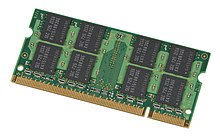Memory Organization :-
BIOS(Basic Input Output System)
BIOS (basic input/output system) is the program a personal computer's microprocessor uses to get the computer system started after you turn it on. It also manages data flow between the computer's operating system and attached devices such as the hard disk, video adapter, keyboard, mouse and printer.
ROM (Read Only Memory)
- ROM is an acronym for Read-Only Memory. It refers to computer memory chips containing permanent or semi-permanent data. Unlike RAM, ROM is non-volatile; even after you turn off your computer, the contents of ROM will remain.
- Almost every computer comes with a small amount of ROM containing the boot firmware. This consists of a few kilobytes of code that tell the computer what to do when it starts up, e.g., running hardware diagnostics and loading the operating system into RAM. On a PC, the boot firmware is called the BIOS.
- Originally, ROM was actually read-only. To update the programs in ROM, you had to remove and physically replace your ROM chips. Contemporary versions of ROM allow some limited rewriting, so you can usually upgrade firmware such as the BIOS by using installation software. Rewritable ROM chips include PROMs (programmable read-only memory), EPROMs (erasable read-only memory), EEPROMs (electrically erasable programmable read-only memory), and a common variation of EEPROMs called flash memory.
![What is ROM [Read Only Memory ] ? | Storage Memory | Types of ROM](https://blogger.googleusercontent.com/img/b/R29vZ2xl/AVvXsEgqF0menvcjDu-OIdGYGa9Tb7stcNpisRF4CdaWZOw_QiqC3HuW65xDVZvN4sK6gGs7rlNI5dNOKHMPAD50FDyZkXhQbsOAFoiULA78Qf6gMLzXLsVqJKqwz2foo15Yic-ybO7saFXiV6Yc/w512-h288/20190119_125335.png)
RAM (Random Access Memory)
- RAM (Random Access Memory) is the hardware in a computing device where the operating system (OS), application programs and data in current use are kept so they can be quickly reached by the device's processor. RAM is the main memory in a computer, and it is much faster to read from and write to than other kinds of storage, such as a hard disk drive (HDD), solid-state drive (SSD) or optical drive.
- Random Access Memory is volatile. That means data is retained in RAM as long as the computer is on, but it is lost when the computer is turned off. When the computer is rebooted, the OS and other files are reloaded into RAM, usually from an HDD or SSD.







0 Comments
Tell us your queries or more topics which you want